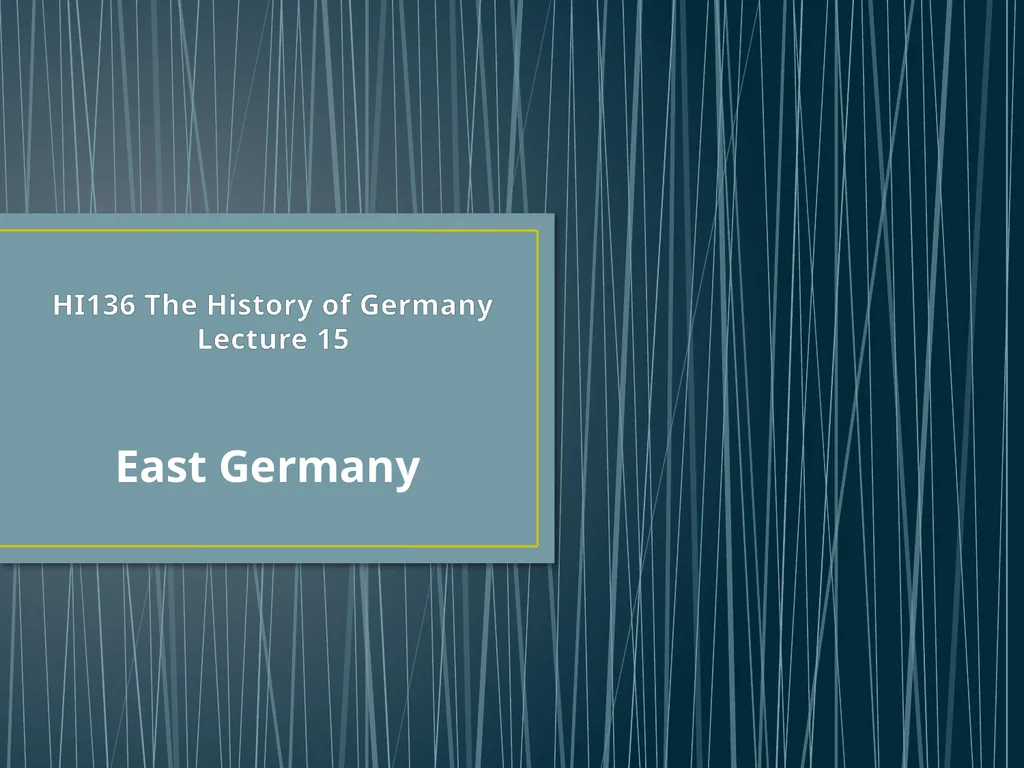HI136 The History of Germany Lecture 15 East
Author : tatiana-dople | Published Date : 2025-11-08
Description: HI136 The History of Germany Lecture 15 East Germany Introduction Debates over the history of the GDR objective assessments are still difficult to arrive at Continuity with German history especially with the Nazi period
Presentation Embed Code
Download Presentation
Download
Presentation The PPT/PDF document
"HI136 The History of Germany Lecture 15 East" is the property of its rightful owner.
Permission is granted to download and print the materials on this website for personal, non-commercial use only,
and to display it on your personal computer provided you do not modify the materials and that you retain all
copyright notices contained in the materials. By downloading content from our website, you accept the terms of
this agreement.
Transcript:HI136 The History of Germany Lecture 15 East:
HI136 The History of Germany Lecture 15 East Germany Introduction Debates over the history of the GDR – objective assessments are still difficult to arrive at. Continuity with German history (especially with the Nazi period)? ‘Periodization’ of East German history: Direct occupation by Soviet forces (1945-49) From establishment of the GDR to the building of the Wall (1949-61) ‘Golden Age’ of consolidation & economic liberalization (1961-71) Honecker Period (1971-89) Disintegration & Collapse (1989-90) The Socialist Unity Party (SED) June 1945: Soviets legalise political parties. Poor performance of Communists elsewhere in Poland & Hungary leads to pressure for ‘socialist unity’. April 1946: Merger of SPD & KPD in the Soviet Zone to form the SED. 1946 free elections: SED polls 48% SED functions as hub of ‘Antifascist Bloc’ including Christian Democrats and Liberal Democrats, and later National Democrats and Farmers; elections also fought as single Bloc list (aka National Front). 1948-51: SED Stalinised into ‘New-Type Party’; purge of former Social Democrats & loss of parity principle. SED membership: rose from 1.3 (1946) to 2.3 million (1986), including many careerist members. Functionaries (i.e. officials) liked to list themselves as ‘workers’ but had they really become middle-class? ‘Politbureaucracy’ lived sheltered existence in Wandlitz compound, including all mod cons. Wilhelm Pieck (KPD) shakes hands with Otto Grotewohl (SPD) on formation of SED, April 1946. The Constitution of the German Democratic Republic Preamble: “The German People, imbued with the desire to safeguard human liberty and rights, to reshape collective and economic life in accordance with the principles of social justice, to serve social progress, and to promote a secure peace and amity with all peoples, have adopted this constitution.” Article 3: “All state authority emanates from the people. Every citizen has the right and the duty to take part in the formation of the political life of his Gemeinde (community), Kreis (county), Land (state) and of the German Democratic Republic. [...] State authority must serve the welfare of the people, liberty, peace and the progress of democracy. Those active in public service are servants of the community as a whole and not of any one party. Their activity is supervised by the popular representative body.” Article 5: “The generally recognized rules of international law are binding upon state authority and every citizen. It is the duty of state authority to maintain and cultivate amicable relations with all peoples. No citizen may participate in belligerent actions













